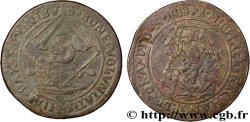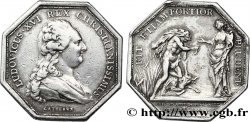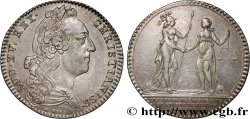fjt_791242 - NORMANDIE (NOBLESSE ET VILLES DE...) Pierre le Marchant, trésorier général des finances à Caen 1627
180.00 €
Количество
Добавить в корзину

Тип Pierre le Marchant, trésorier général des finances à Caen
Дата: 1627
Металл: silver
Диаметр: 27 mm
Ориентация осей монеты: 6 h.
Вес: 5,85 g.
Век: lisse
Редкость: R1
Ссылки в каталоге: :
Происхождение:
Exemplaire provenant de la Collection MARINECHE
Лицевая сторона
Аверс: легенда: * PIERRE. LE. MARCHANT. ECVIER. SR. DE. SAINT. MANVIEV.
Аверс: описание: Écu aux armes de Pierre Le Marchant lambrequiné.
Обратная сторона
Реверс: легенда: .*. ÆTERNITATI .*. ; À L'EXERGUE : .1627..
Реверс: Описание: Deux cœurs sur la double cime d'un mont.
Реверс: перевод: (Pour l'éternité).
Комментарий
Pierre Le Marchant est écuyer et porte d'argent, au chevron de gueules, accompagné de trois roses de même posées deux et un. Deux localités appelées Saint-Manvieu existent : Saint-Manvieu-Bocage (canton de Saint-Sever-Calvados, Calvados) et Saint-Manvieu-Norrey (canton de Tilly-sur-Seulles, Calvados). Pierre Le Marchant est aussi seigneur du Rozel (canton de Les Pieux, Manche). Il fonda au Puy du Palinod de Caen une Ode française, dont le prix est de 100 jetons d’argent dans une bourse de velours vert. Conseiller et secrétaire du roi, trésorier général de France à Caen, il mourut dans cette ville où il est inhumé dans l’église des Cordeliers. Il est le dernier mâle de cette branche. Le bureau des finances d’une généralité est composé de sept personnes : cinq trésoriers généraux de France (deux pour le Domaine, deux pour les aides et imposition, un trésorier) ainsi qu’un greffier et un huissier. L’institution tombe en une profonde inutilité aux XVII et XVIIIe siècles : un autre trésorier de France fut célèbre à Caen, la Bruyère, qui en douze ans, n’est venu que le jour de sa réception.







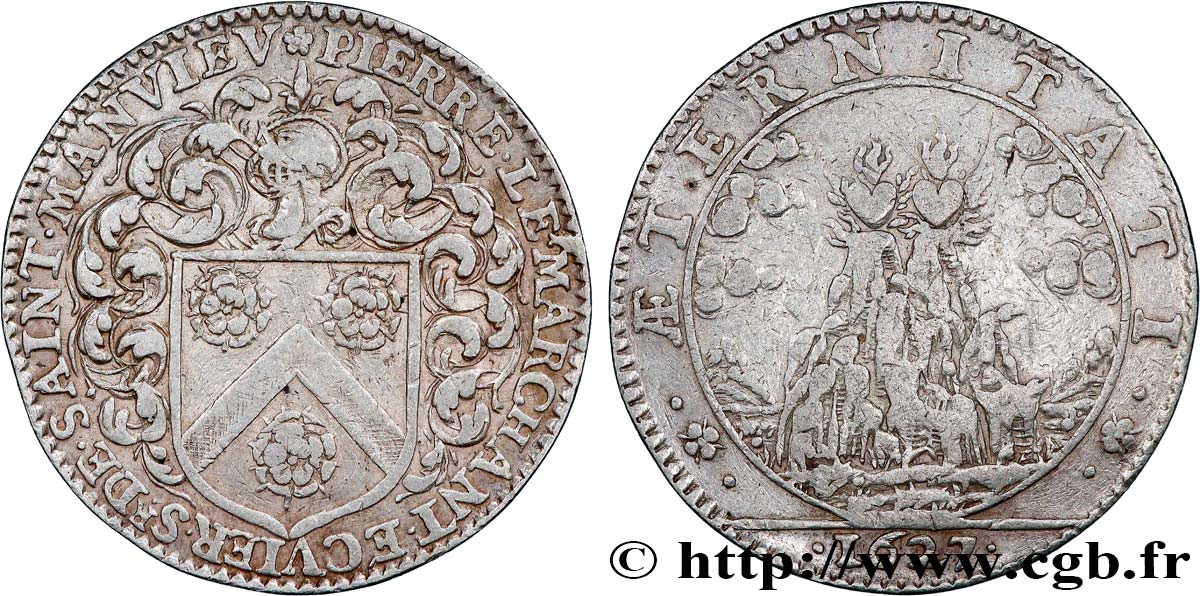
 Cообщить об ошибке
Cообщить об ошибке Распечатать страницу
Распечатать страницу Отправить мой выбор
Отправить мой выбор Задать вопрос
Задать вопрос Consign / sell
Consign / sell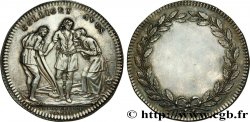
 Информация
Информация